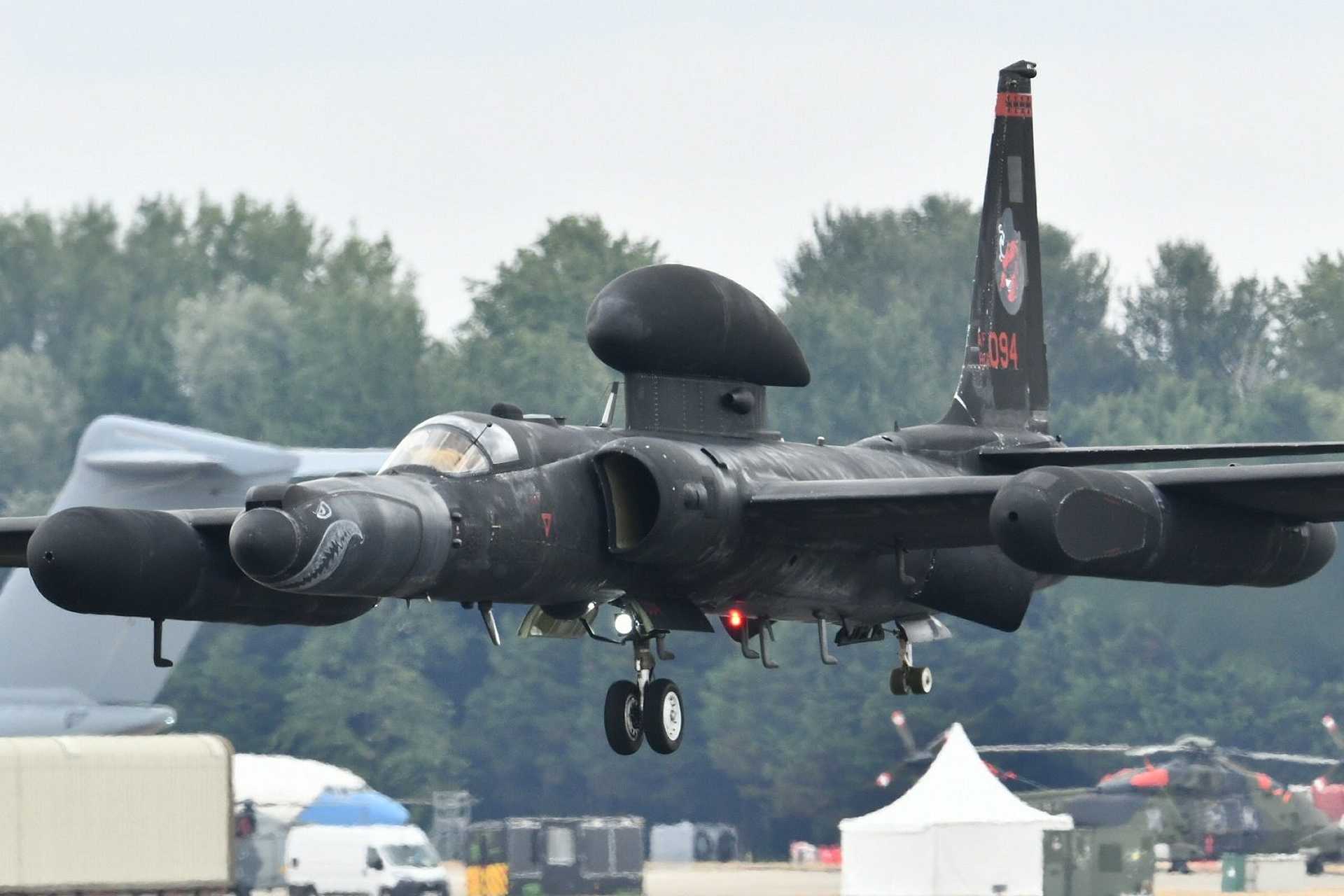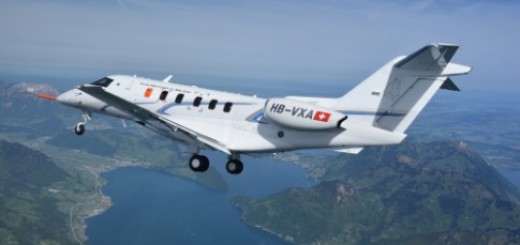RIAT 2025: U.S. Air Force displays highly secretive U-2 Dragon Lady intelligence aircraft

{loadposition bannertop}
{loadposition sidebarpub}
In a rare and highly symbolic move, the United States Air Force showcased one of its most secretive high-altitude surveillance aircraft, the Lockheed U-2 Dragon Lady, during the Royal International Air Tattoo (RIAT) 2025 held at RAF Fairford in the United Kingdom. This exceptional appearance marked one of the very few times the U-2 has been publicly displayed at an international airshow, highlighting the strategic significance of the platform despite its long operational history. The aircraft’s unveiling drew intense attention from military professionals, defense industry experts, and international delegations, underlining its continued relevance in today’s contested intelligence environment.Follow Army Recognition on Google News at this link
A rare public appearance of the US Air Force U2 Dragon Lady spy aircraft during RIAT 2025 at RAF Fairford, in United Kingdom, highlighting its ongoing role in high-altitude strategic surveillance missions worldwide. (Picture source shghr666 X account)
Designed at the height of the Cold War by Lockheed’s famed Skunk Works division, the U-2 was initially conceived as a strategic reconnaissance platform capable of gathering intelligence deep within enemy territory while flying above the reach of early Soviet air defenses. The aircraft is engineered for extreme-altitude operations, cruising at over 70,000 feet, where it can observe targets across vast geographical areas using a range of advanced sensors. The U-2’s slender, glider-like design enables it to maintain long endurance—often exceeding 10 to 12 hours in a single sortie—making it ideal for both broad-area and point-target surveillance in high-risk regions.
The main features that distinguish the U-2 Dragon Lady from other ISR platforms include its modular payload capacity, unique altitude ceiling, and broad mission adaptability. It can carry electro-optical and infrared cameras, synthetic aperture radar (SAR), signals intelligence (SIGINT) suites, and advanced communications relays. These systems can be reconfigured quickly depending on operational needs, allowing the U-2 to transition between tactical and strategic missions. The aircraft also supports the Senior Year Electro-optical Reconnaissance System (SYERS-2C) sensor, which delivers multispectral imaging with ultra-high resolution, and the Advanced Synthetic Aperture Radar System-2 (ASARS-2A), which provides all-weather, day-night imaging capabilities. Additionally, it is equipped with the Distributed Common Ground System (DCGS), allowing real-time intelligence dissemination to combatant commanders and intelligence analysts.
In terms of combat experience, the U-2 has been continuously deployed in nearly every major conflict involving U.S. and allied forces since its inception. From providing critical overflight data during the Cuban Missile Crisis and Vietnam War to conducting surveillance missions over Iraq, Afghanistan, and Syria, the Dragon Lady has been a constant presence in the intelligence community. In Operation Desert Storm, it delivered crucial battlefield imagery and signal intercepts that shaped coalition air campaign planning. During Operation Enduring Freedom and Operation Inherent Resolve, it performed extended surveillance missions to detect insurgent movements, monitor enemy logistics, and locate key targets for precision airstrikes. It has also played a crucial role in Korean Peninsula operations, performing strategic ISR flights near North Korean airspace to monitor military developments and missile activity.
The aircraft’s persistence and ability to operate in GPS-degraded or denied environments have become increasingly valuable in the face of modern electronic warfare threats. Recent upgrades under the Avionics Tech Refresh (ATR) and Open Mission Systems (OMS) programs have enhanced the U-2’s cockpit with digital interfaces, advanced flight control software, and open-architecture computing frameworks. These upgrades not only improve flight safety and mission effectiveness but also ensure seamless integration with modern command and control (C2) networks and allied platforms, reinforcing its utility in joint and coalition operations.
The U-2’s relevance has only grown in the face of rising global tensions and the resurgence of peer competitors employing sophisticated anti-access/area-denial (A2/AD) strategies. While satellite surveillance and unmanned aerial systems have taken on many ISR roles, none match the Dragon Lady’s combination of altitude, flexibility, rapid re-tasking, and real-time data delivery. Its ability to operate in airspace where satellites may be blinded or destroyed, and where drones may be jammed or intercepted, ensures that the U-2 remains a mission-critical platform in scenarios where assurance of information superiority is paramount.
The U.S. Air Force’s decision to display the U-2 at RIAT 2025 sends a clear and deliberate message: this aircraft is not a relic of the past but a fully operational, front-line asset adapted for modern warfare. Its presence at one of the world’s premier airshows reaffirmed its unmatched capabilities and the critical role it continues to play in securing global situational awareness. As advanced ISR demands grow and global threats become more complex, the Dragon Lady remains one of the most strategically valuable aircraft in the world today.

{loadposition bannertop}
{loadposition sidebarpub}
In a rare and highly symbolic move, the United States Air Force showcased one of its most secretive high-altitude surveillance aircraft, the Lockheed U-2 Dragon Lady, during the Royal International Air Tattoo (RIAT) 2025 held at RAF Fairford in the United Kingdom. This exceptional appearance marked one of the very few times the U-2 has been publicly displayed at an international airshow, highlighting the strategic significance of the platform despite its long operational history. The aircraft’s unveiling drew intense attention from military professionals, defense industry experts, and international delegations, underlining its continued relevance in today’s contested intelligence environment.
Follow Army Recognition on Google News at this link
A rare public appearance of the US Air Force U2 Dragon Lady spy aircraft during RIAT 2025 at RAF Fairford, in United Kingdom, highlighting its ongoing role in high-altitude strategic surveillance missions worldwide. (Picture source shghr666 X account)
Designed at the height of the Cold War by Lockheed’s famed Skunk Works division, the U-2 was initially conceived as a strategic reconnaissance platform capable of gathering intelligence deep within enemy territory while flying above the reach of early Soviet air defenses. The aircraft is engineered for extreme-altitude operations, cruising at over 70,000 feet, where it can observe targets across vast geographical areas using a range of advanced sensors. The U-2’s slender, glider-like design enables it to maintain long endurance—often exceeding 10 to 12 hours in a single sortie—making it ideal for both broad-area and point-target surveillance in high-risk regions.
The main features that distinguish the U-2 Dragon Lady from other ISR platforms include its modular payload capacity, unique altitude ceiling, and broad mission adaptability. It can carry electro-optical and infrared cameras, synthetic aperture radar (SAR), signals intelligence (SIGINT) suites, and advanced communications relays. These systems can be reconfigured quickly depending on operational needs, allowing the U-2 to transition between tactical and strategic missions. The aircraft also supports the Senior Year Electro-optical Reconnaissance System (SYERS-2C) sensor, which delivers multispectral imaging with ultra-high resolution, and the Advanced Synthetic Aperture Radar System-2 (ASARS-2A), which provides all-weather, day-night imaging capabilities. Additionally, it is equipped with the Distributed Common Ground System (DCGS), allowing real-time intelligence dissemination to combatant commanders and intelligence analysts.
In terms of combat experience, the U-2 has been continuously deployed in nearly every major conflict involving U.S. and allied forces since its inception. From providing critical overflight data during the Cuban Missile Crisis and Vietnam War to conducting surveillance missions over Iraq, Afghanistan, and Syria, the Dragon Lady has been a constant presence in the intelligence community. In Operation Desert Storm, it delivered crucial battlefield imagery and signal intercepts that shaped coalition air campaign planning. During Operation Enduring Freedom and Operation Inherent Resolve, it performed extended surveillance missions to detect insurgent movements, monitor enemy logistics, and locate key targets for precision airstrikes. It has also played a crucial role in Korean Peninsula operations, performing strategic ISR flights near North Korean airspace to monitor military developments and missile activity.
The aircraft’s persistence and ability to operate in GPS-degraded or denied environments have become increasingly valuable in the face of modern electronic warfare threats. Recent upgrades under the Avionics Tech Refresh (ATR) and Open Mission Systems (OMS) programs have enhanced the U-2’s cockpit with digital interfaces, advanced flight control software, and open-architecture computing frameworks. These upgrades not only improve flight safety and mission effectiveness but also ensure seamless integration with modern command and control (C2) networks and allied platforms, reinforcing its utility in joint and coalition operations.
The U-2’s relevance has only grown in the face of rising global tensions and the resurgence of peer competitors employing sophisticated anti-access/area-denial (A2/AD) strategies. While satellite surveillance and unmanned aerial systems have taken on many ISR roles, none match the Dragon Lady’s combination of altitude, flexibility, rapid re-tasking, and real-time data delivery. Its ability to operate in airspace where satellites may be blinded or destroyed, and where drones may be jammed or intercepted, ensures that the U-2 remains a mission-critical platform in scenarios where assurance of information superiority is paramount.
The U.S. Air Force’s decision to display the U-2 at RIAT 2025 sends a clear and deliberate message: this aircraft is not a relic of the past but a fully operational, front-line asset adapted for modern warfare. Its presence at one of the world’s premier airshows reaffirmed its unmatched capabilities and the critical role it continues to play in securing global situational awareness. As advanced ISR demands grow and global threats become more complex, the Dragon Lady remains one of the most strategically valuable aircraft in the world today.





